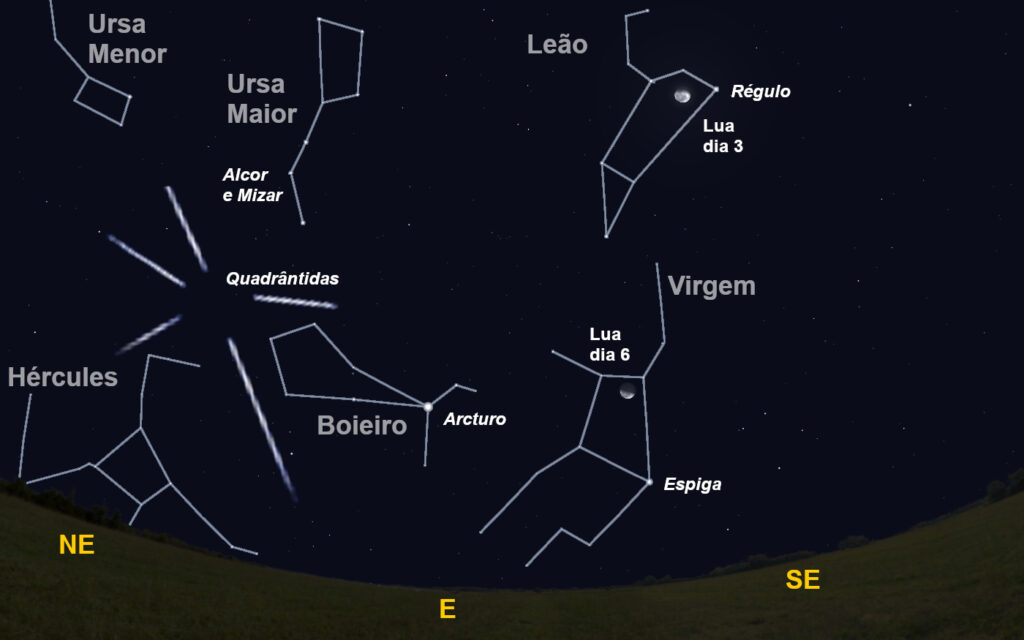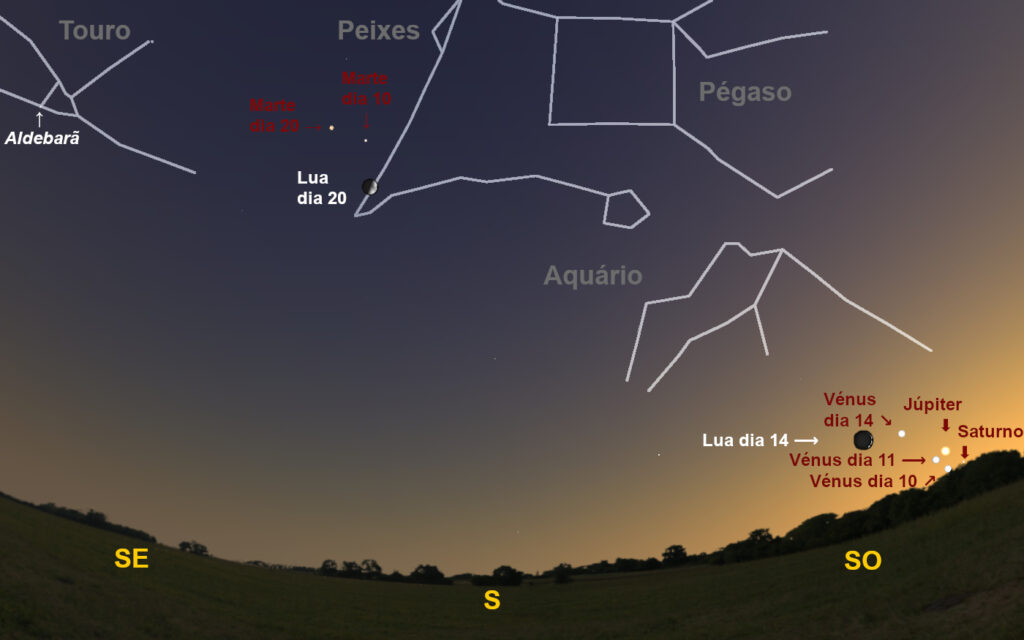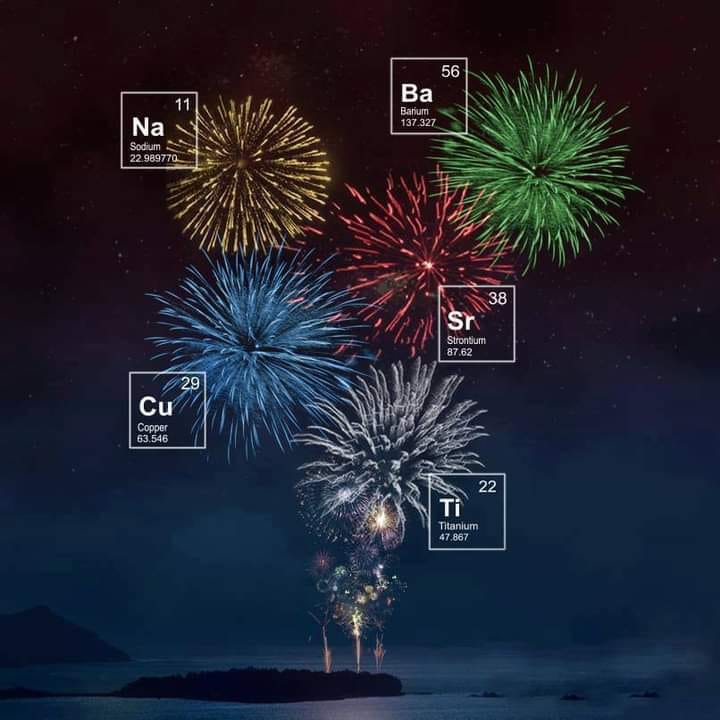On the first Saturday of 2021, our planet reaches the point of its orbit closest to the Sun: perihelion. Despite this, as at this time of the year the northern hemisphere is facing away from the Sun, our star-king appears to the south of the celestial equator (projection of the equator on the celestial sphere). Consequently, for these days in our country the nights are longer and colder than they were six months ago (time of the year when our planet was farthest from the Sun).
On the night of the 2nd, the Moon will be seen next to Régulo, the heart of the constellation Leo. This ephemeris will be repeated at dawn on the 30th.
In turn, on the first Sunday of the year, there is a peak of activity of the shower of Quandrantid stars, which seem to arise from a part of the sky (the radiant) occupied by the constellation Quadrans Muralis (Mural Quadrant), imagined by the French astronomer Jérôme Lalande. which is currently in disuse. Unlike other meteor showers, the Quandrantids are not the result of our planet passing along the trail of a comet, but rather an asteroid: the 2003 EH1.

Note that due to the presence of the Moon, even in places without light pollution sources this year, no more than two dozen meteors per hour will be visible.
On the morning of the 6th, the waning quarter will take place. This occurs 3 days before the Moon reaches the point of its orbit closest to Earth (the perigee).
Between nightfall on the 9th and 11th the planet Mercury will pass alongside Saturn and Jupiter.
At the end of the morning of the 10th, we will watch the Moon rise along with Antares, a reddish giant star in the heart of the constellation Scorpio. A dawn later our natural satellite will have reached Venus.
The New Moon will occur at dawn on the 13th, and it is not possible to observe it as it is towards the Sun. .
On the night of the 20th the crescent quarter will take place. During that night we will be able to see how the Moon will gradually approach the planet Mars.

At dawn on the 24th, the Moon will be seen beside Aldebarã, the eye of the constellation Taurus. In this same dawn Saturn will be in conjunction (ie in the direction) with the Sun, while Mercury will reach its greatest elongation (distance) to the East relative to the Sun. So while the first ephemeris does not allow us to observe Saturn, the second will give us more time to observe Mercury early the next night.
At nightfall on the 28th, the Full Moon will take place, the last great ephemeris of this month.
Happy New Year and good remarks!
Author Fernando JG Pinheiro (CITEUC)
Science in the Regional Press – Ciência Viva



















Comments